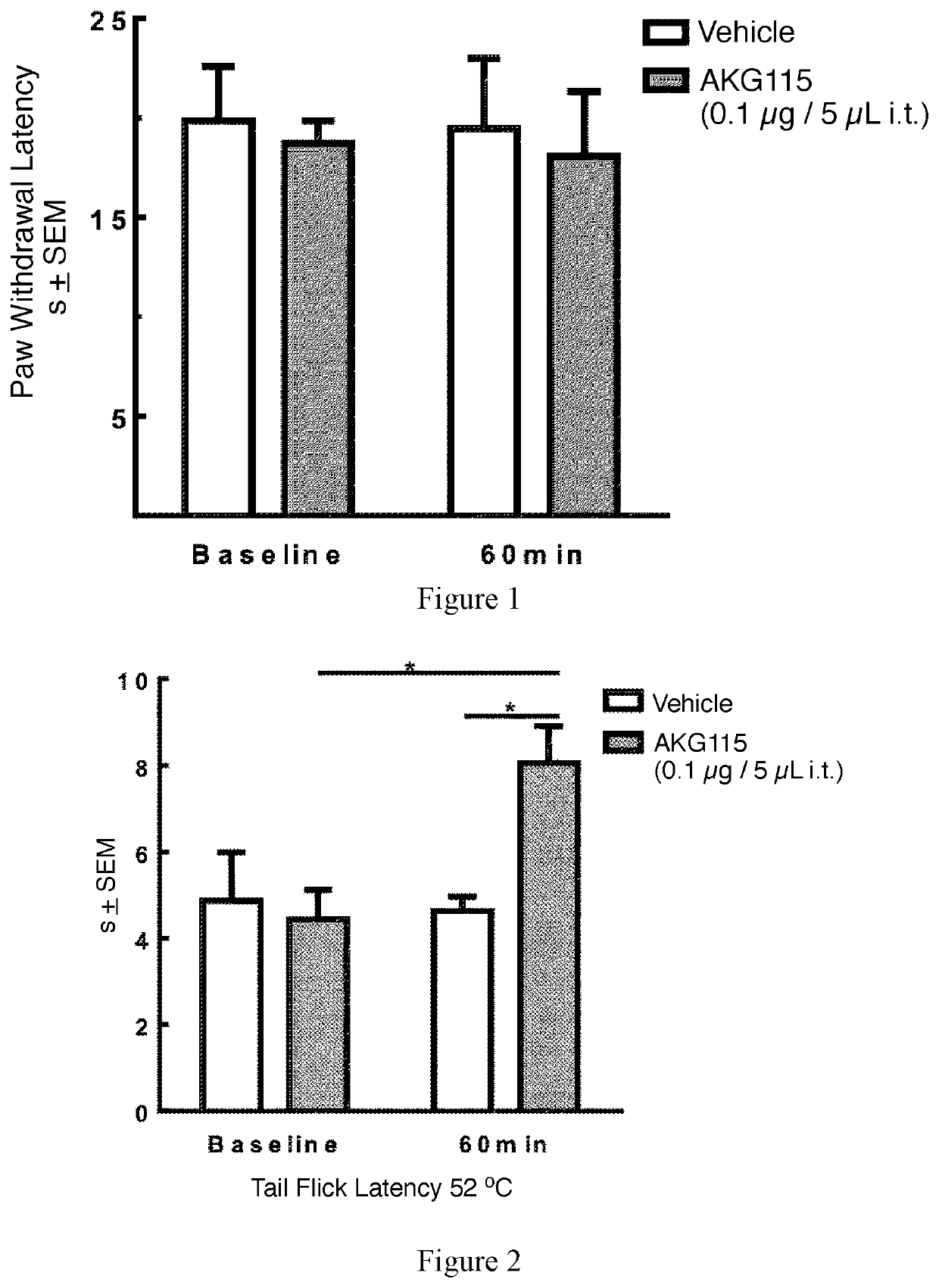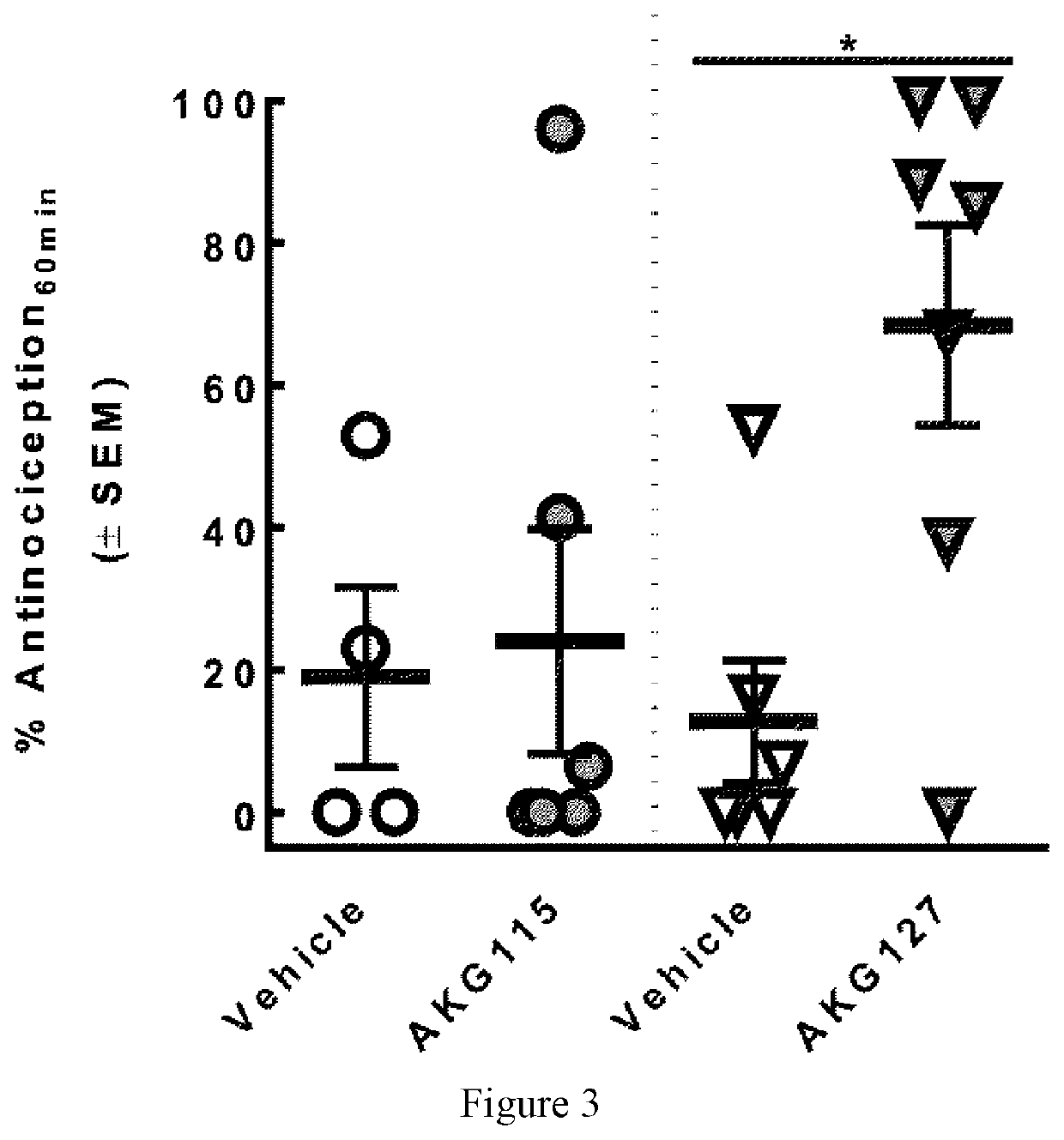Peptides comprising opioid receptor agonist and nk1 receptor antagonist activities
a technology of opioid receptors and peptides, which is applied in the direction of peptides, drug compositions, peptides/protein ingredients, etc., can solve the problems of reducing the quality of life of patients, drowsiness and mental clouding, and constant opioid treatment is accompanied by serious undesirable effects, so as to improve the potency of analgesic effects and increase the activity of substances
- Summary
- Abstract
- Description
- Claims
- Application Information
AI Technical Summary
Benefits of technology
Problems solved by technology
Method used
Image
Examples
examples
[0064]Synthesis and characterization of ligands: All linear peptides were synthesized on solid phase using 2-chlorotrityl chloride resin (loading: 1.02 mmol / g) via Fmoc / tBu approach. All steps during solid phase synthesis were performed in frited syringes. N-methylation on desired amino acid was performed on solid phase. C-terminal amidation was conducted in solution phase.
[0065]Loading of the first amino acid on the resin: Chlorotrityl resin (0.102 mmol) was swelled in dry dichloromethane (DCM) for 1 hour at room temperature. After swelling, dry DCM was expelled from the syringe and the resin was washed with DCM (1 mL, 3×1 min). It was then ready for the first amino acid coupling. Pre-generated (by treating with 5.0 equiv. DIPEA) carboxylate of Fmoc-Trp(Boc)-OH (1.2 equiv.) in dry DCM (1.0 mL) was loaded onto the resin by substituting chloride from the resin. After the coupling of first amino acid, methanol (0.1 mL) was added to the mixture and was shaken for 15 minutes in order to...
PUM
| Property | Measurement | Unit |
|---|---|---|
| pharmaceutical composition | aaaaa | aaaaa |
| affinities | aaaaa | aaaaa |
Abstract
Description
Claims
Application Information
 Login to View More
Login to View More - R&D
- Intellectual Property
- Life Sciences
- Materials
- Tech Scout
- Unparalleled Data Quality
- Higher Quality Content
- 60% Fewer Hallucinations
Browse by: Latest US Patents, China's latest patents, Technical Efficacy Thesaurus, Application Domain, Technology Topic, Popular Technical Reports.
© 2025 PatSnap. All rights reserved.Legal|Privacy policy|Modern Slavery Act Transparency Statement|Sitemap|About US| Contact US: help@patsnap.com



